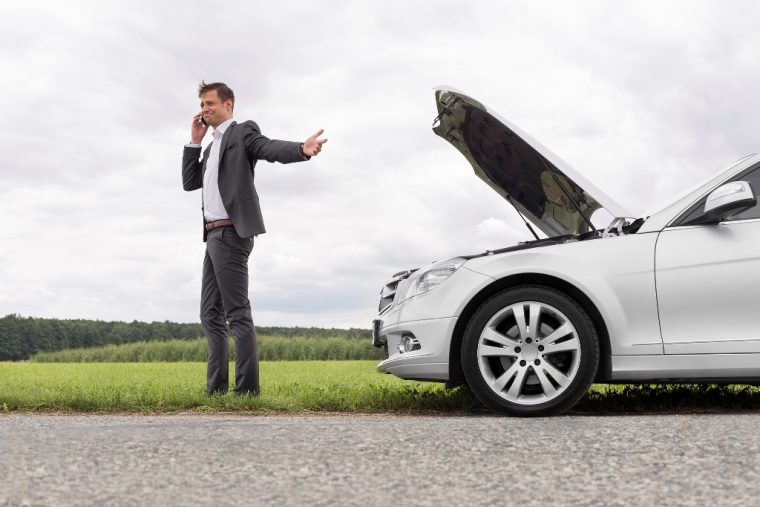First of all, there are two primary reasons your car would ever get towed: because it was illegally parked (a non-consensual towing) or because it’s broken down and you can’t move it (a voluntary towing). While there is little you can do to prepare for the first scenario, there are steps you can take to prepare your vehicle for a voluntary towing to a nearby garage for repairs.
If you’ve never had your car towed, here is some advice on what to expect and making the move stress-free (you’re probably already stressed as it is!).
Steps for Safely Towing Your Car
Step 1: Safety
If your vehicle has broken down, chances are it didn’t happen somewhere you expected it to. Hopefully you’re in a parking space and just can’t start the car, but if it died while on the road, it’s important that you and your vehicle move to safety. If you can put your car in neutral and push it to the side of the road, do so. If you cannot, place cones, flares, flags, or other indicators around your vehicle to alert oncoming traffic of the danger. And if it’s too dangerous to even get out of the car, stay put.
Either way, put the hazard blinkers on and put a sign visibly in the car window that says “Towing.” Don’t attempt to make repairs yourself if you don’t know what you’re doing. Even if you don’t ultimately get your car towed, someone can be sent to jump it or change the tire.
Step 2: Preparation
Before you make any calls to get your car towed, gather up your paperwork for the vehicle. This includes registration, insurance cards, driver’s license, and any roadside assistance program membership cards.
Step 3: Making the Call
Making the call is as simple as dialing a number and providing information, but deciding who to call might take some deliberation. If you have a roadside assistance program, such as AAA, that provides towing services in the cost of your membership, the choice is easy. Other possible parties to contact include:
- Automaker: If your car is new and still under warranty, contact your car manufacturer’s roadside assistance hotline–or if you’re enrolled in a service like OnStar
- Auto Insurance: Depending on what coverage you have on your vehicle, it may include roadside and towing assistance
- Credit Card Companies: Some companies that aren’t directly automotive-related offer roadside assistance to customers in certain circumstances
If you don’t already have a plan in mind for who to call when situations like this happen, we strongly recommend doing research and being prepared for the next time this happens. Otherwise, a tow could cost you over $100 out of pocket.
Step 4: Wait
Whatever service you call will send a truck from a local garage or towing service based on the company’s preferred partners list. But the tow truck won’t immediately show up, so in the meantime, wait in the car. Keep the windows most of the way up and be wary of people who try to solicit or approach you who aren’t with the towing company. Keep the doors locked and keep a watchful eye; you don’t want to be taken advantage of!
Step 5: Towing
When the truck arrives, you’ll have to sign some paperwork–for identification, liability, and service agreements–and then you’ll receive instructions on what to do to your car. Chances are, the tow truck driver will have you put the vehicle in neutral while s/he attaches a towrope or hooked chain to it. Once the vehicle has been loaded up, you’ll be given information on where it’s going and what to do next.
At this point, it’s now up to the service garage to fix it. Good luck!
Sources: VisiHow, Auto Towing Inc
The News Wheel is a digital auto magazine providing readers with a fresh perspective on the latest car news. We’re located in the heart of America (Dayton, Ohio) and our goal is to deliver an entertaining and informative perspective on what’s trending in the automotive world. See more articles from The News Wheel.
